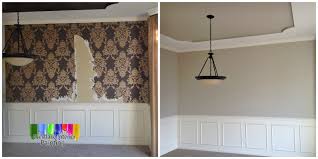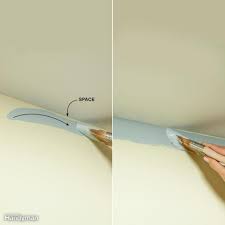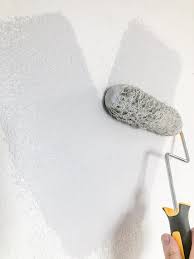Hello, DIY enthusiasts and future builders! Whether you’re diving into a new construction project or tackling a renovation, framing a wall is a foundational skill that can make or break your project. Done correctly, it sets the stage for everything else, from drywall installation to the final finishes. This guide will walk you through the entire process of framing a wall, with detailed steps and tips to ensure you achieve a professional-quality result, all while adhering to Michigan building codes.
Essential Tools and Materials for Framing Walls
Before you start framing, gather your tools and materials. Having the right equipment and understanding their uses will streamline your project and help you work more efficiently.
Materials:
- Lumber (2x4s or 2x6s)
- Purpose: The backbone of your wall structure. For most interior walls, 2x4s are standard, while 2x6s are preferred for exterior walls or when additional insulation is needed.
- Benefits: Provides necessary support for vertical and horizontal loads, ensuring the wall’s strength and stability.
- Nails and Screws
- Purpose: Fastening lumber components together. Framing nails are used for speed, whereas screws are preferred for their superior holding power.
- Benefits: Nails are efficient for quick assembly, while screws offer a stronger connection, especially for load-bearing components like headers and corners.
- Construction Adhesive
- Purpose: Applied between surfaces to bond them together. For example, it’s used between the bottom plate and the floor or the top plate and the ceiling.
- Benefits: Enhances the strength of the connection, reduces noise transmission, and prevents gaps that can lead to structural weaknesses or air leaks.
- Drywall Backer (Plywood or Additional 2x4s)
- Purpose: Provides extra support in areas where heavy fixtures or appliances will be mounted.
- Benefits: Offers a robust surface for attaching drywall and fixtures, preventing sagging or damage.
- Fire Breaks (Horizontal 2x4s or Plywood)
- Purpose: Installed horizontally between studs to enhance fire resistance.
- Benefits: Helps slow the spread of fire through wall cavities, contributing to overall fire safety.
Step-by-Step Framing Process
Let’s break down the framing process into detailed, manageable steps. Each step is crucial for ensuring a successful outcome, and understanding these details will make your project smoother and more precise.
- Planning and Measuring
- Laser-Level Layout:
- Setup: Place the laser level on a stable surface and adjust it to project horizontal lines at the desired height.
- Application: Use the laser lines to mark reference points on the floor and ceiling for both the top and bottom plates. This ensures your wall is level and straight.
- Mark the Floor:
- Chalk Line: Snap a chalk line along the laser mark on the floor where the bottom plate will be installed. This line acts as a guide for placing the bottom plate accurately.
- Checking Alignment: Double-check the alignment using a tape measure and ensure it’s consistent with your laser level.
- Mark the Ceiling:
- Transferring Measurements: Use a measuring tape to transfer the floor measurements to the ceiling, aligning with the laser lines. This will help you place the top plate precisely.
- Laser-Level Layout:
- Cutting Your Lumber
- Measure and Cut Plates:
- Measuring: Measure the length required for both top and bottom plates based on the wall’s dimensions. Add extra length for any necessary adjustments.
- Cutting: Use a miter saw to cut the plates to the exact length. Ensure your cuts are straight and clean for a proper fit.
- Determine Stud Length:
- Measuring Height: Measure the distance between the floor and ceiling, then subtract 3 inches to account for the thickness of the top and bottom plates.
- Cutting Studs: Cut the studs to this length, making sure each is consistent for a uniform wall.
- Measure and Cut Plates:
- Laying Out Your Wall
- Laser-Guided Layout:
- Positioning Plates: Place the top and bottom plates on the floor according to your laser-marked lines.
- Mark Stud Locations: Use the laser level to project lines onto the plates where the studs will go, ensuring accuracy.
- Start at 15 1/4″ for Stud Layout:
- Why 15 1/4″? This measurement aligns with the standard 4-foot width of drywall sheets. It simplifies the installation process by centering the drywall on the studs, reducing waste and making it easier to secure.
- Marking: Measure 15 1/4″ from one end of the plate and mark it. Continue marking every 16 inches from this initial point (15 1/4″, 31 1/4″, 47 1/4″, etc.) to indicate stud centers.
- Mark Stud Positions:
- Speed Square: Use a speed square to draw lines at each mark on the plates. These lines will guide you in placing and securing the studs.
- Labeling: Mark the positions with an “X” to ensure you know where each stud will be installed.
- Laser-Guided Layout:
- Pulling Square with Modern Techniques
- Importance of Squaring:
- Structural Integrity: A square frame ensures that the wall is structurally sound and that all components fit together correctly.
- Alignment: Proper squaring prevents issues with drywall installation and other finishing processes.
- Measuring Diagonals:
- Measurement: Measure the distance between the opposite corners of the frame. Both measurements should be the same if the frame is square.
- Pythagorean Theorem: For an 8-foot high wall, calculate the hypotenuse to ensure accuracy:962+962=9216+9216=18432≈135.7 inches\sqrt{96^2 + 96^2} = \sqrt{9216 + 9216} = \sqrt{18432} \approx 135.7 \text{ inches}962+962=9216+9216=18432≈135.7 inches
- Adjusting:
- Fine-Tuning: If the diagonal measurements are not equal, adjust the corners until they match. This step ensures that your frame is perfectly square.
- Importance of Squaring:
- Advanced Framing Techniques
- Double Top Plate with Overlap:
- On Load-Bearing Walls: Use a double top plate where the second plate overlaps the first by at least 24 inches. This technique provides extra strength and helps distribute loads more evenly.
- On Partition Walls and Corners: Extend the top plate to cover intersecting walls. This creates a continuous load-bearing surface, ensuring the stability of the wall.
- Drywall Backer:
- High-Stress Areas: Identify areas where heavy fixtures, cabinets, or appliances will be mounted.
- Installation: Install additional 2x4s or plywood between studs at these locations. This provides a solid attachment point for drywall and fixtures, preventing sagging or damage.
- Fire Breaks:
- Installation: Place horizontal fire breaks between studs to meet fire-resistance codes. Typically, these should be installed at intervals of 8 feet or as specified by local regulations.
- Material: Use horizontal 2x4s or plywood cut to fit snugly between studs, securing them with nails or screws.
- Framing for Doors and Windows:
- King Studs: Install vertical studs on either side of the door or window opening to support the wall structure.
- Cripple Studs: Place these above and below the opening to transfer loads and provide additional support.
- Nailer Studs: Add horizontal nailers at the top and bottom of the opening to provide a solid surface for attaching drywall and trim.
- Double Top Plate with Overlap:
- Stacking Studs: Why and How
- Why Stack Studs? Aligning studs with joists or rafters ensures that loads are transferred directly down through the wall, enhancing overall stability and reducing the risk of wall failure.
- How to Stack Studs:
- Laser Level: Project a vertical line from the joists down to the top plate using your laser level.
- Alignment: Position each stud directly beneath a joist or rafter. Adjust as necessary to ensure that the studs are properly aligned and spaced.
- Breaking Top Plate Seams
- Why Break Seams? Staggering the seams of your top plates helps distribute stress evenly across the wall, preventing weak points and ensuring a stronger, more stable structure.
- Minimum Distance: Maintain at least 24 to 48 inches between seams on the top plate to avoid creating concentrated stress points and to provide structural integrity.
- Final Adjustments and Securing
- Re-Check Squareness and Plumb:
- Verification: Use a laser level and a carpenter’s level to ensure that the wall is both plumb (vertically straight) and square (at 90 degrees). This step is crucial for a successful framing job.
- Install Blocking:
- Where Needed: Add horizontal blocking between studs in areas that will bear weight or where fixtures will be mounted. This adds strength and stability.
- Metal Strapping: Use metal strapping if extra reinforcement is needed for stability.
- Anchor the Wall:
- Seismic Zones: In areas prone to seismic activity, use anchor bolts or straps to secure the wall to the foundation and ceiling joists. This additional step enhances the wall’s stability and resistance to movement.
- Re-Check Squareness and Plumb:
Safety Precautions
- Wear Protective Gear: Always use safety glasses, ear protection, and gloves when operating power tools to protect yourself from debris and noise.
- Tool Safety: Ensure all tools are in good working order and that you are familiar with their operation to prevent accidents and achieve accurate results.
- Safe Lifting Practices: Use proper lifting techniques and seek help with heavy or awkward frames to avoid injury.
Code Compliance in Michigan
- Framing Codes: Adhere to the Michigan Residential Code (MRC) for specifications on load-bearing walls, stud spacing, and material requirements to ensure your construction meets local standards.
- Fire Safety: Install fire breaks and frame openings in accordance with local fire safety codes to ensure compliance and enhance building safety.
- Insulation: Frame walls to accommodate insulation requirements as specified by Michigan’s energy codes, contributing to energy efficiency and comfort.
- Permits and Inspections: Obtain necessary permits and schedule inspections as required by your local municipality to ensure that your work complies with all regulations and standards.
Conclusion
Framing a wall may seem daunting, but with a clear understanding of the process and attention to detail, you can achieve professional results. By following these comprehensive steps and adhering to Michigan’s building codes, you’ll create a strong, stable, and code-compliant wall. Remember, careful planning, precise execution, and compliance with safety standards are key to a successful framing project.
Happy framing, and may your project be a great success!
Keywords: wall framing, Michigan building codes, framing techniques, construction adhesive, drywall backer, fire breaks, door and window framing, stud alignment, top plate seams




